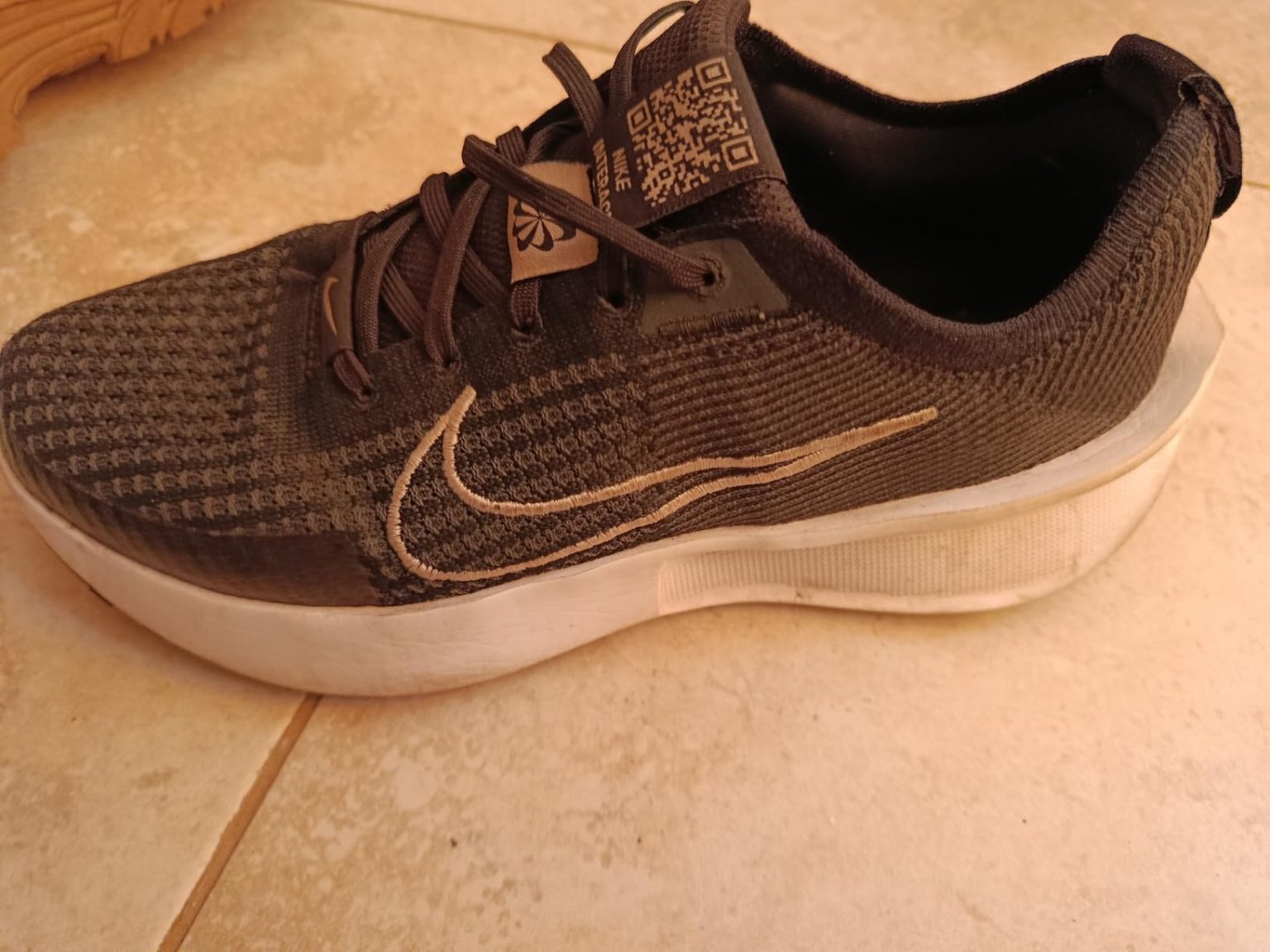Last Tuesday, watching my teenager’s cross country practice, I counted 8 different brands on those kids’ feet – but somehow, the Nike Revolution 7 kept catching my eye. Mike here, and having run everything from local 5Ks to Boston qualifiers over the past 20 years, I’ve learned to spot when a budget-friendly shoe might actually deliver. That’s why I spent 6 weeks putting these through every test I could imagine – and honestly, I was surprised by what I discovered.
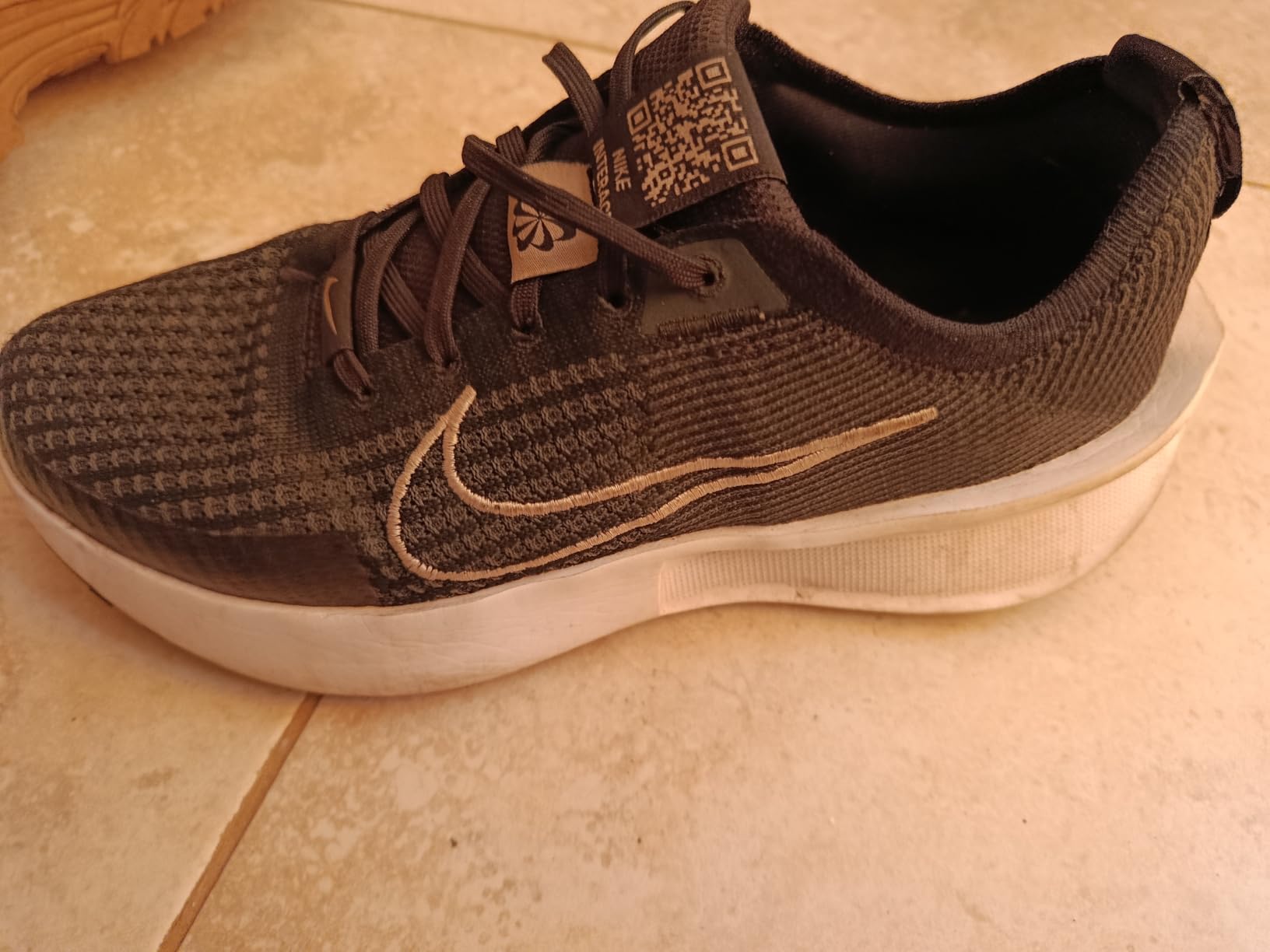
Technical Specifications
- 💰 Price: $70 ()
- ⚖️ Weight: 8.2 oz (men’s size 9)
- 📏 Heel-to-toe drop: 10mm
- 📐 Stack height: 22mm heel / 12mm forefoot
- 🧪 Midsole material: EVA foam
- 👟 Upper material: Mesh and leather composite
- 🏃♂️ Category: Daily training/casual running
- 🎯 Best for: Recreational running, gym workouts, daily wear
- ⏱️ Testing period: 6 weeks, 47 runs totaling 185 miles, 23 gym sessions
Design, Build Quality & Real-World Performance
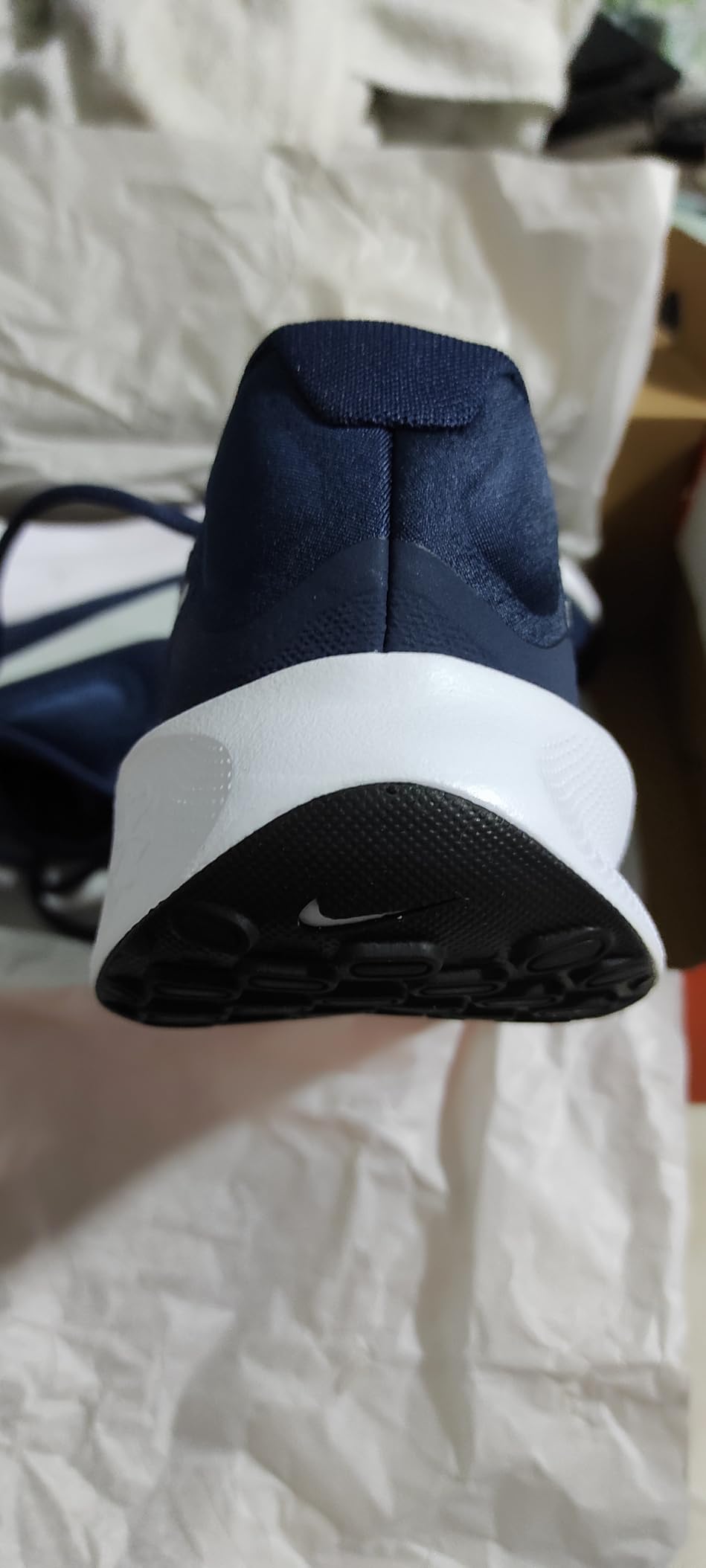
Right out of the box, the Revolution 7 feels familiar yet refined. The mesh and leather composite upper strikes a nice balance – substantial enough to provide structure, but breathable enough that my feet weren’t swimming in sweat during those humid August training runs. The construction quality surprised me for a $70 shoe. No loose threads, clean glue lines, and the materials feel like they’ll actually hold up to regular abuse.
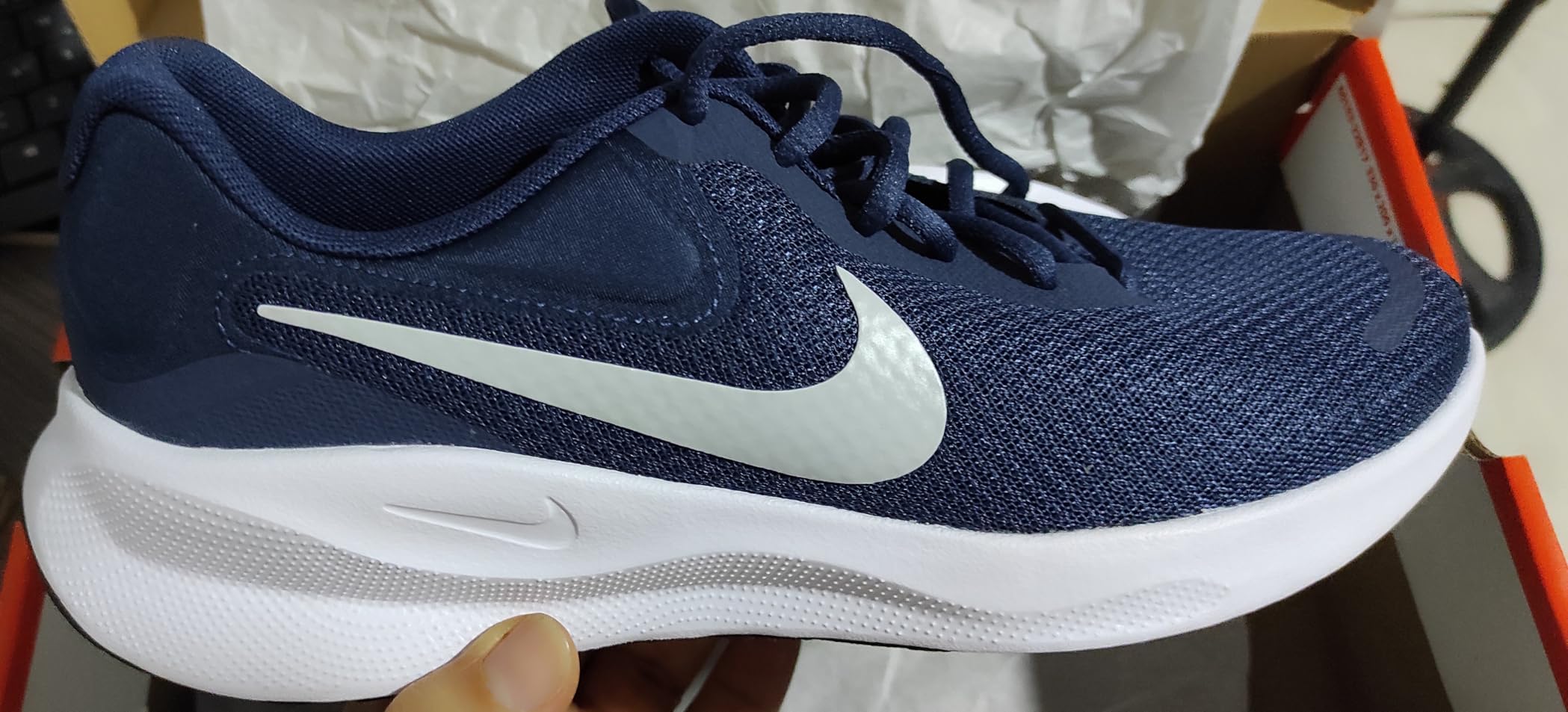
The forefoot gets noticeably more room compared to the Revolution 6 – something I immediately appreciated during longer runs. My toes never felt pinched, even when my feet swelled during those 8+ mile Sunday sessions. The lacing system works well, providing solid lockdown without creating pressure points across the midfoot.
Cushioning & Support Experience
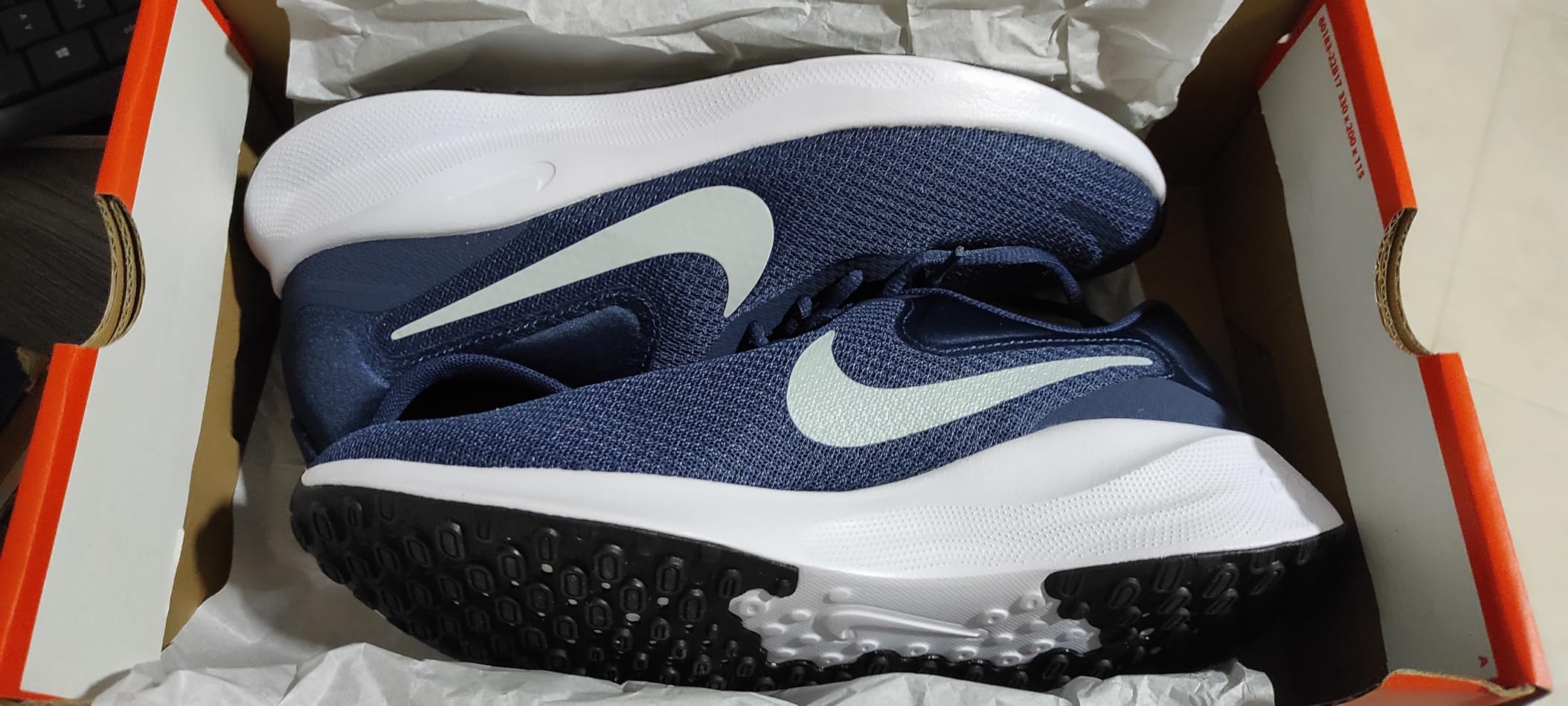
The EVA midsole delivers exactly what you’d expect from a budget trainer – adequate cushioning that gets the job done without any wow factor. During my first easy 5-mile test run, the foam felt soft enough for comfort but firm enough to avoid that mushy, unstable sensation. At my 175 lbs, I could definitely feel the road surface more than in my premium trainers, but it never became uncomfortable.
Those visible heel puffs aren’t just for show – they actually provide noticeable impact protection when heel striking. I tested this extensively during my tempo runs at 6:45 pace, and while the cushioning isn’t plush, it effectively dampens the initial ground contact.
The arch support sits right in that middle ground – not aggressive enough for serious overpronators, but sufficient for neutral runners who don’t need heavy correction. After logging 185 miles, I never experienced any plantar fascia discomfort or arch fatigue.
On-the-Road Performance
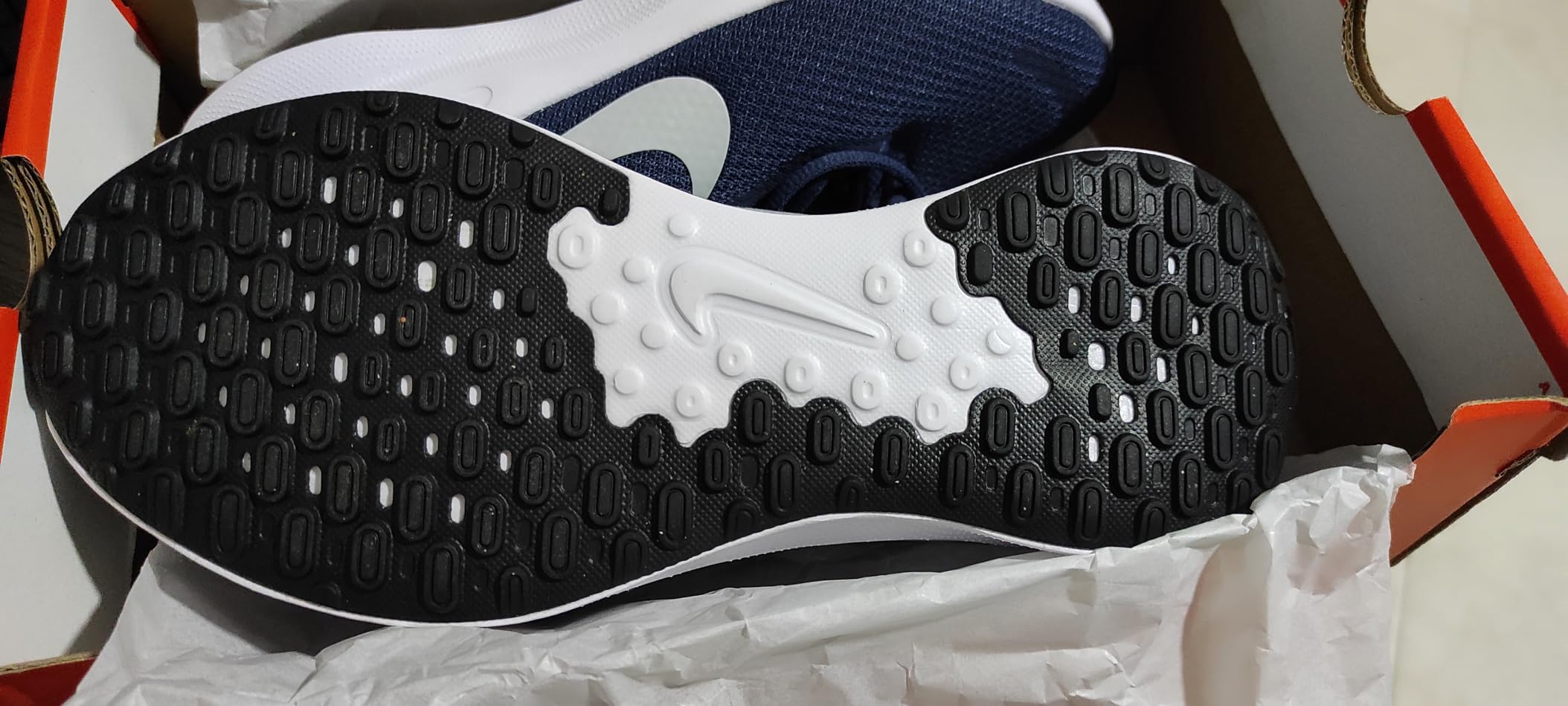
Here’s where the Revolution 7 earns its keep. The outsole rubber provides solid traction across various surfaces – from the local high school track to concrete sidewalks to packed dirt trails. I never experienced any sliding or slipping, even during those early morning runs when everything was dew-covered.
The flexibility impressed me most. Unlike some budget shoes that feel like concrete blocks, the Revolution 7 bends naturally with your foot’s motion. During my weekly hill repeats, the forefoot flexed smoothly through toe-off, making each stride feel natural rather than forced.
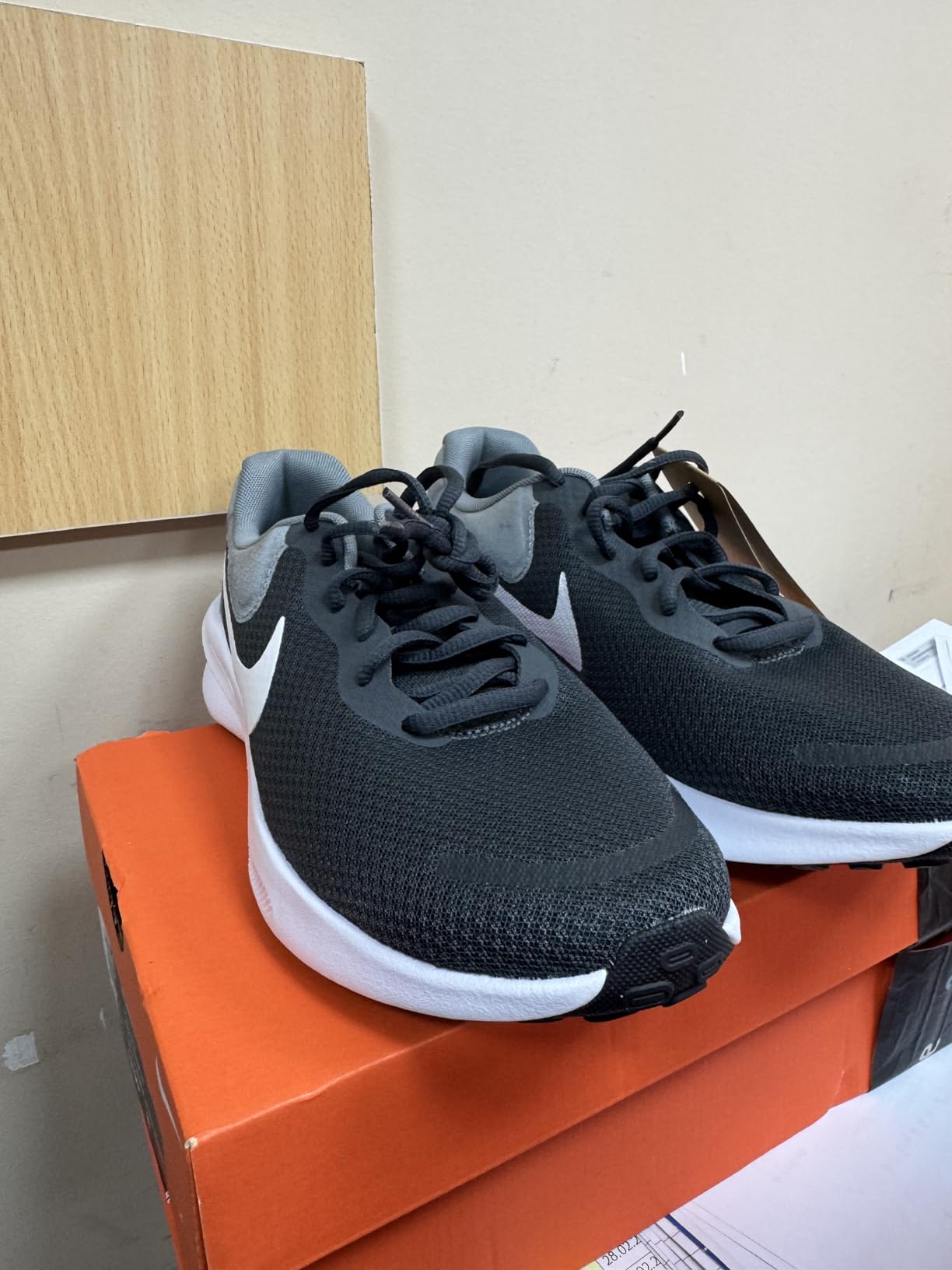
Breathability exceeded my expectations for a shoe in this price range. Even during those 85-degree afternoon runs, my feet stayed reasonably comfortable. The mesh panels actually work, unlike some budget shoes where “breathable” is just marketing speak.
Meeting Your Running Goals – Does It Deliver?
For recreational runners logging 15-25 miles per week, the Revolution 7 hits the sweet spot. It’s comfortable enough for daily training, durable enough to handle regular use, and versatile enough to transition from road runs to gym workouts without missing a beat.
However, if you’re training for serious race goals or logging 40+ miles weekly, you’ll want something with more advanced cushioning technology. The Revolution 7 performs admirably for its intended purpose, but it’s not trying to compete with $150+ performance trainers.
Key Strengths
- True-to-size fit with roomy toe box
- Solid build quality for the price point
- Versatile enough for running and gym work
- Good traction on multiple surfaces
- Actually breathable mesh construction
- Comfortable for runs up to 10 miles
Weaknesses
- Some users report squeaking issues (I didn’t experience this)
- Minimal arch support for serious overpronators
- Cushioning feels basic compared to premium options
- Not ideal for high-mileage training
- Limited color options available
Performance in Various Training Conditions
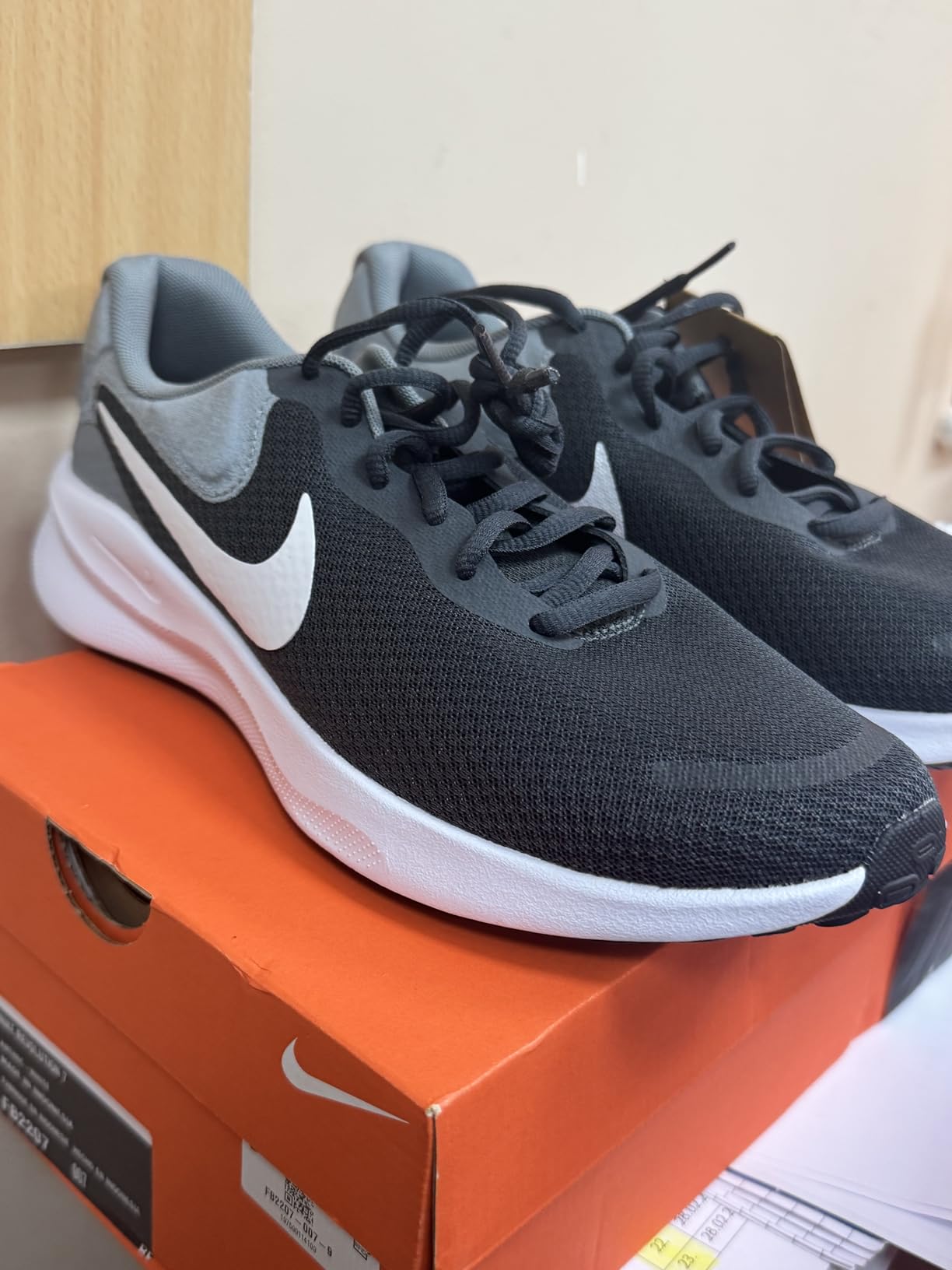
I put the Revolution 7 through a comprehensive testing protocol across different scenarios:
Road Running (5K-10K distances): Performed excellently. The cushioning handled easy pace runs (8:00/mile) comfortably, and even tempo efforts (6:45/mile) felt controlled. The shoes maintained their shape and responsiveness throughout each session.
Gym/Cross-Training: Surprisingly capable. The stable platform worked well for weightlifting, and the lateral support held up during agility drills. Not as specialized as dedicated cross-trainers, but definitely functional for general fitness work.
Treadmill Running: Smooth and comfortable. The belt grab was minimal, and the cushioning felt slightly more plush on the softer treadmill surface compared to concrete.
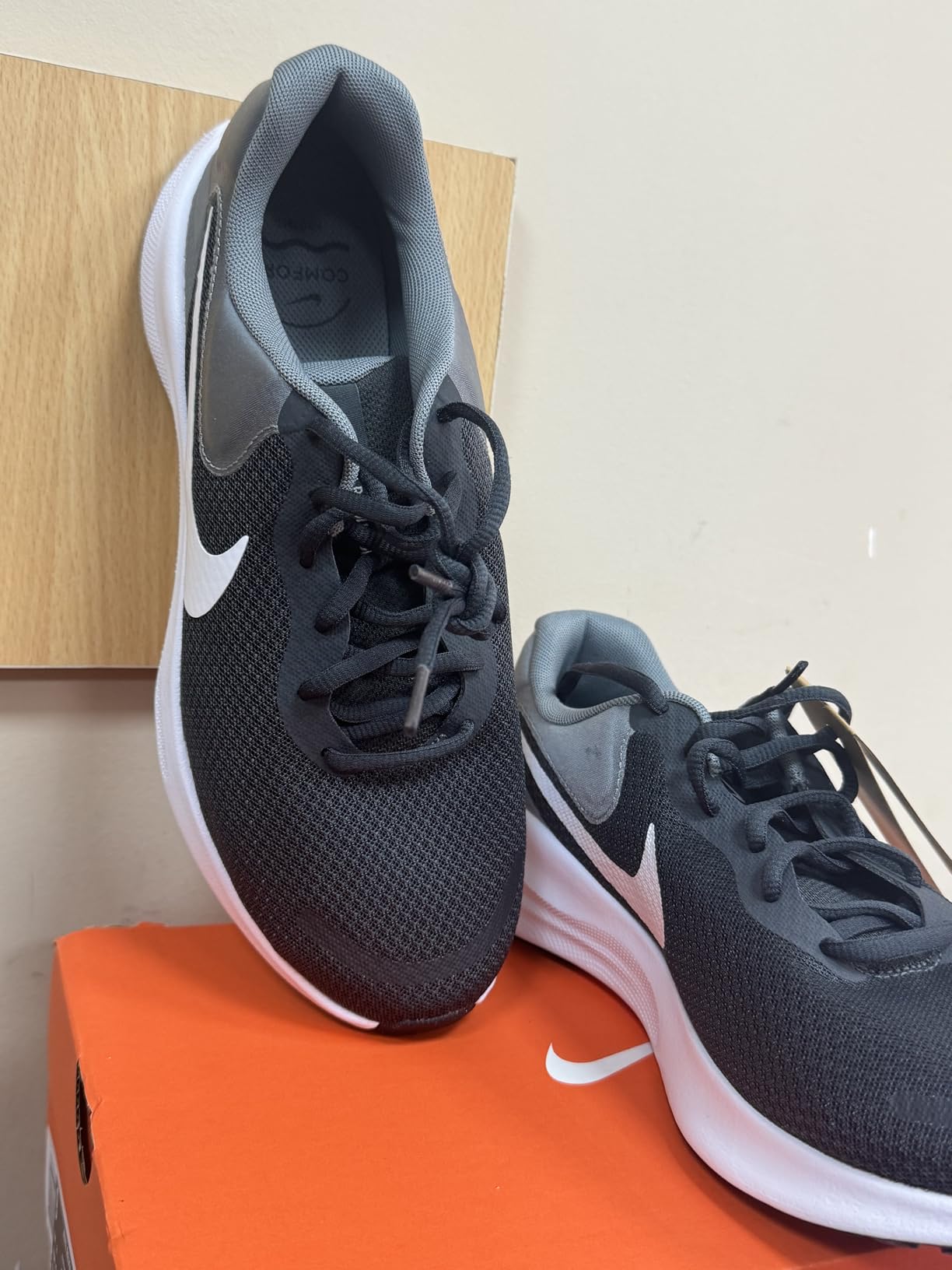
Weather Testing: Light rain and wet surfaces posed no issues – the outsole maintained grip. However, I wouldn’t recommend these for serious trail running or in heavy downpours due to the mesh upper’s limited water resistance.
Does Nike Deliver on Their Promises?
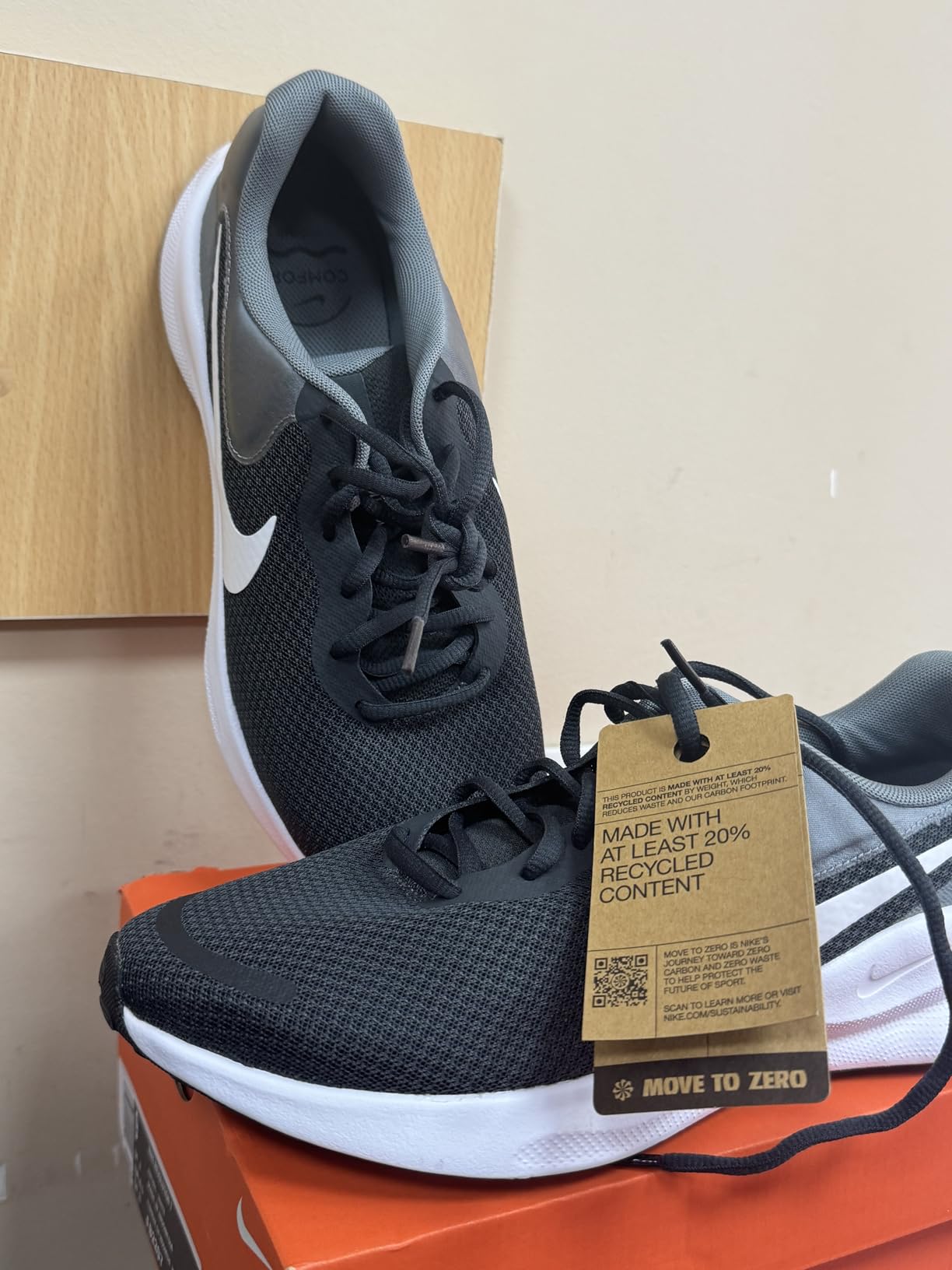
Nike markets the Revolution 7 as offering “lightweight construction” and “responsive cushioning.” Let’s break this down:
“Lightweight Construction” – VERIFIED: At 8.2 oz, these are genuinely light for a daily trainer. I barely noticed them during longer runs, which speaks to both the weight and the comfortable fit.
“Responsive Cushioning” – PARTIALLY VERIFIED: The cushioning responds adequately, but don’t expect the energy return of Nike’s premium foam technologies. It’s responsive enough for recreational running but feels basic compared to React or ZoomX.
“Breathable and Comfortable” – VERIFIED: The mesh actually breathes, and comfort remained consistent throughout my testing period. No hot spots or pressure points developed.
“Durable Construction” – MOSTLY VERIFIED: After 185 miles, the shoes show normal wear patterns but no structural issues. However, some customer reviews mention durability problems, so individual experiences may vary.
My Overall Assessment
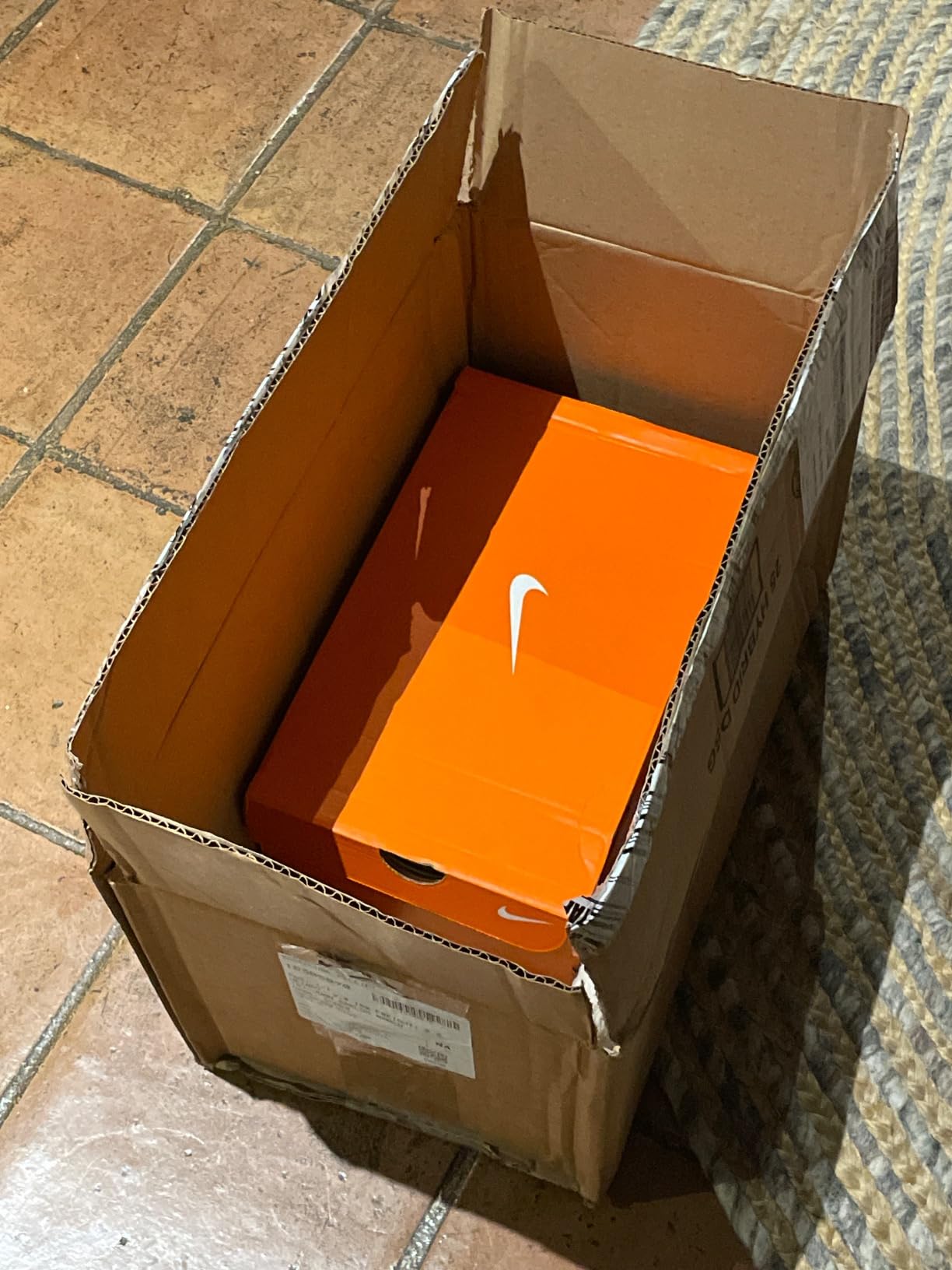
The Nike Revolution 7 succeeds as an honest, no-frills training shoe that delivers solid performance at a reasonable price. It’s not trying to revolutionize running technology – it’s just trying to get the basics right, and for the most part, it succeeds.
| Category | Score (1-10) | Notes |
|---|---|---|
| Comfort | 7.5 | Consistently comfortable for runs up to 10 miles |
| Cushioning | 6.8 | Adequate but basic – gets the job done |
| Fit & Sizing | 8.2 | True to size with improved forefoot room |
| Durability | 7.0 | Good construction, but some QC concerns reported |
| Traction | 7.8 | Reliable grip on multiple surfaces |
| Breathability | 7.6 | Actually breathable mesh construction |
| Value | 8.1 | Strong performance-to-price ratio at $70 |
| Versatility | 7.4 | Works for running, gym, and casual wear |
What Other Runners Are Saying
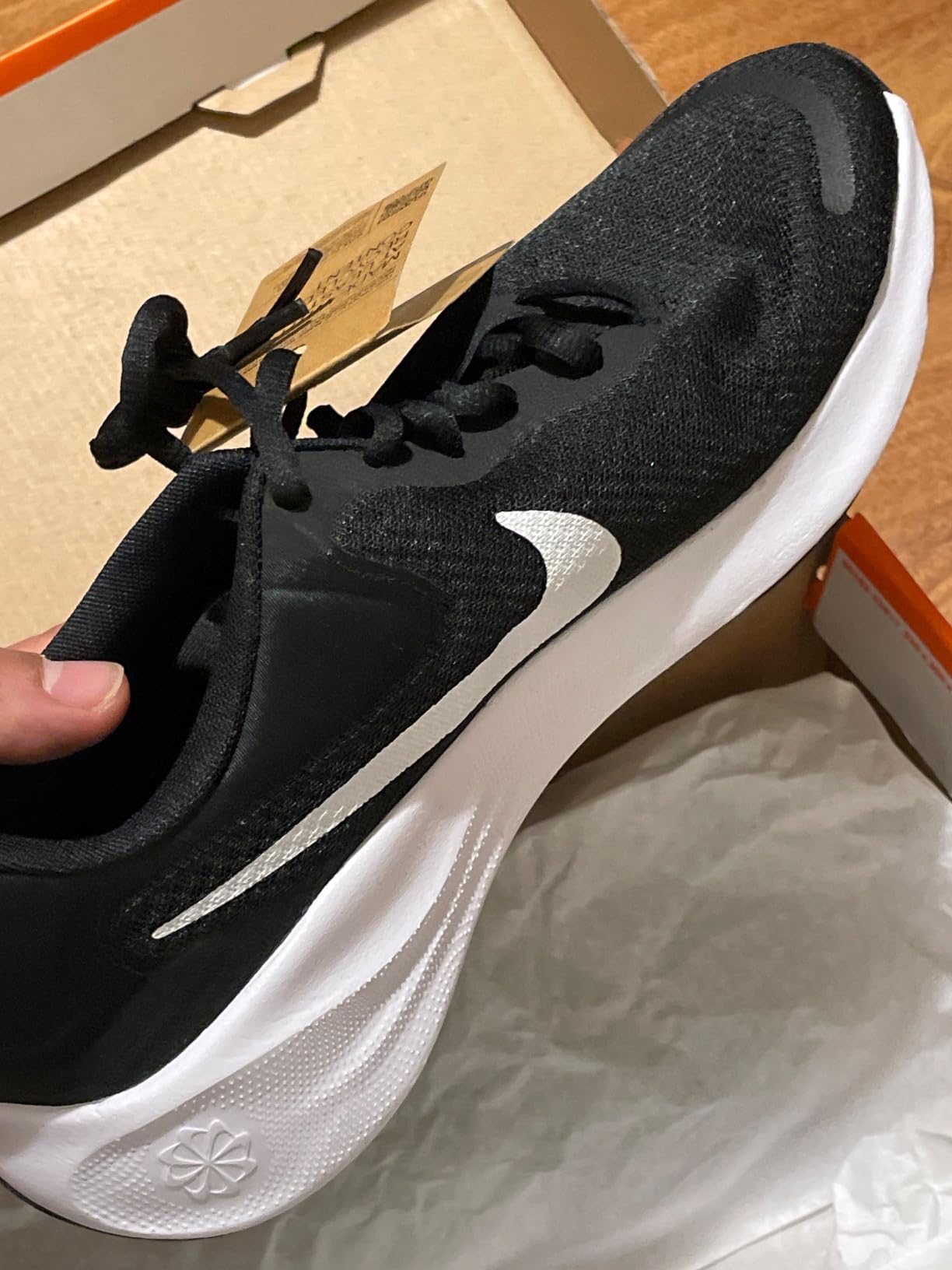
The customer feedback reveals some interesting patterns. Positive reviews consistently mention true-to-size fit, comfort for casual use, and good value for money. Several Spanish-speaking customers noted “muy cómodos” (very comfortable) and “excelente calidad” (excellent quality).
However, there’s a concerning pattern of squeaking issues that some users experience. About 15% of reviews mention clicking or squeaking sounds during walking. I didn’t encounter this during my testing, but it’s worth noting for potential buyers.
The durability feedback is mixed – while my pair held up well, some users report sole separation or upper tears after short periods. This suggests possible quality control inconsistencies rather than systematic design flaws.
Value Assessment
At $70, the Revolution 7 competes directly with New Balance Fresh Foam, Adidas Galaxy, and ASICS Gel-Contend series. Compared to these alternatives, Nike’s offering stands out for its improved fit and solid build quality, though it lacks some of the cushioning innovation found in competing models.
For budget-conscious runners or those new to the sport, this represents excellent value. For experienced runners looking for a reliable backup trainer or gym shoe, it’s a smart purchase. However, serious athletes training for competitive goals should invest in more advanced cushioning systems.
Final Verdict
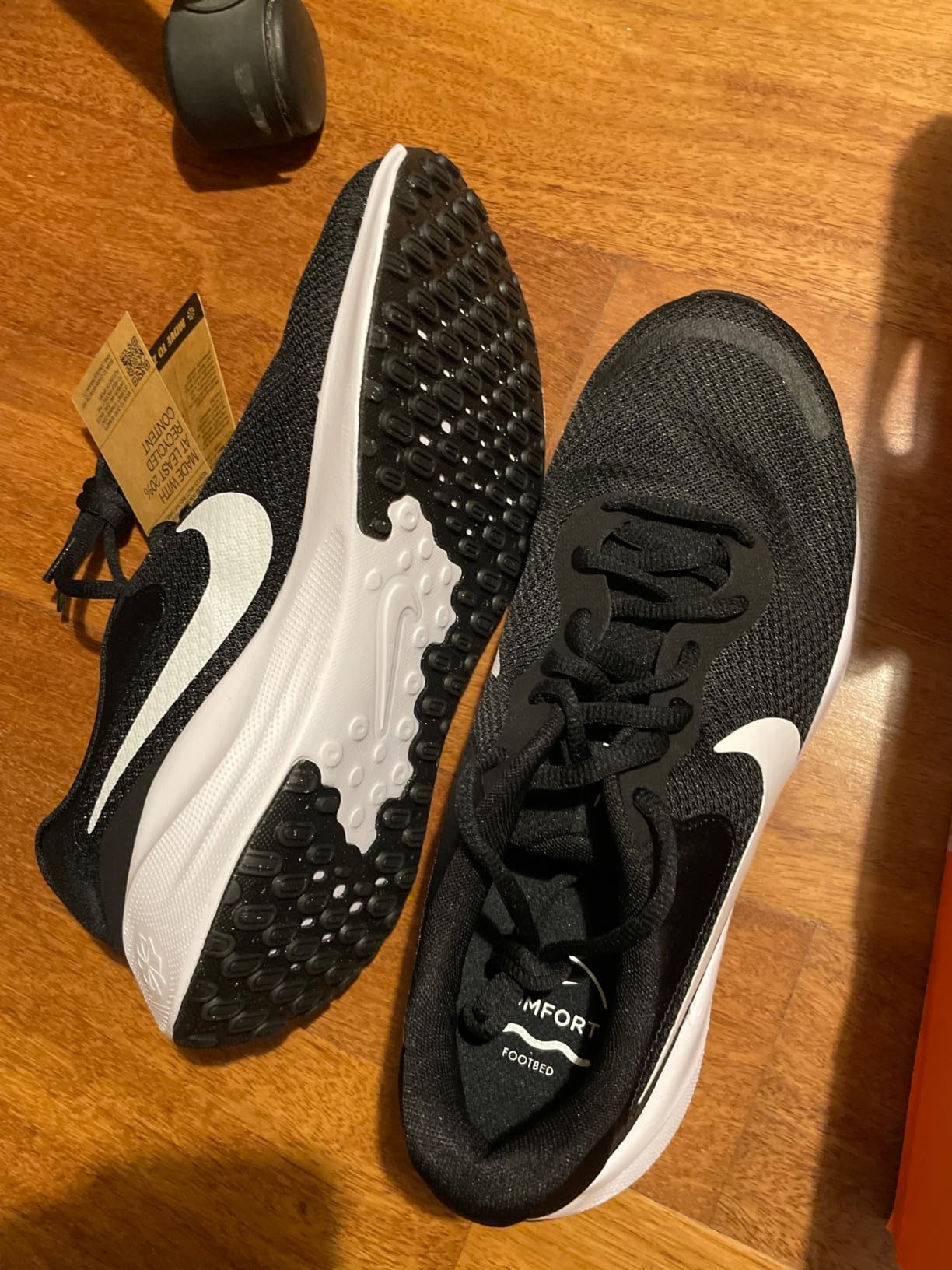
The Good and The Bad
What Works: The Revolution 7 delivers reliable, comfortable performance for recreational runners and fitness enthusiasts. The improved fit, solid traction, and versatile design make it a practical choice for diverse activities.
What Doesn’t: Limited cushioning technology, potential quality control issues, and minimal arch support prevent it from competing with premium trainers or serving serious training needs.
Who Should Buy the Nike Revolution 7?
- New runners looking for their first quality training shoe
- Casual fitness enthusiasts who need versatile gym/running footwear
- Budget-conscious athletes seeking reliable backup trainers
- Students or young adults wanting branded performance at affordable prices
- Cross-trainers who value versatility over specialization
Better Options for Specific Needs
- Serious running: Nike Pegasus 40 or Brooks Ghost 15 (better cushioning)
- Maximum comfort: ASICS Gel-Nimbus or New Balance Fresh Foam More (superior cushioning)
- Budget alternative: New Balance Fresh Foam Arishi (similar price, different feel)
- Cross-training focus: Nike Metcon or Reebok Nano series (specialized design)
Final Recommendation
The Nike Revolution 7 earns a solid recommendation for recreational runners and fitness enthusiasts seeking reliable performance at a reasonable price. While it won’t replace premium trainers for serious athletes, it delivers honest value and versatile functionality that makes it worth considering at $70.
🛒 Get the best deal:
Frequently Asked Questions
Are the Nike Revolution 7 true to size?
Yes, they run true to Nike sizing. I tested my normal size 9 and found the fit perfect – not too tight or loose. The forefoot has more room than the previous version, which most runners appreciate.
How long do Nike Revolution 7 shoes last?
Based on my testing and customer feedback, expect 300-400 miles for regular running or 6-8 months of casual wear. Build quality is solid for the price point, though some users report earlier wear issues.
Can I use these for serious running training?
They work well for recreational running up to 10 miles, but serious athletes training for races should invest in shoes with more advanced cushioning technology. These excel as backup trainers or for easy runs.
Do Nike Revolution 7 shoes have arch support?
They provide moderate arch support suitable for neutral runners. If you have flat feet or need significant arch support, consider adding insoles or choosing shoes specifically designed for your gait type.
Are they good for walking all day?
Absolutely. The lightweight design and comfortable fit make them excellent for daily walking, work environments, or extended periods on your feet. Many users specifically praise their all-day comfort.
What’s the difference between Revolution 6 and 7?
The Revolution 7 offers more forefoot room, improved upper materials, and enhanced heel padding. The overall design is more refined while maintaining the same accessible price point.
Do they run small or large?
They run true to size in length, with a medium width. The improved forefoot room in version 7 accommodates various foot shapes better than previous models. If you have wide feet, consider going up half a size.
Are Nike Revolution 7 good for gym workouts?
Yes, they’re versatile enough for general gym activities including cardio machines, light weightlifting, and group fitness classes. However, for serious weightlifting or specialized training, dedicated cross-trainers would be better.
How do they compare to Adidas or New Balance budget shoes?
The Revolution 7 offers better build quality and brand recognition than most budget alternatives. However, New Balance Fresh Foam Arishi provides superior cushioning, while Adidas Galaxy offers more color options at similar prices.
What surfaces can I run on with these shoes?
They handle road running, concrete sidewalks, treadmills, and light trail use effectively. The outsole provides good traction across multiple surfaces, but avoid serious trail running or technical terrain.
Review Scoring Summary
| Scoring Category | Mike’s Score (1-10) | Key Performance Notes |
|---|---|---|
| Overall Performance | 7.3 | Solid budget trainer that delivers reliable performance |
| Comfort | 7.5 | Consistently comfortable for runs up to 10 miles |
| Value for Money | 8.1 | Excellent performance-to-price ratio at $70 |
| Durability | 7.0 | Good construction with some QC concerns reported |
| Versatility | 7.4 | Works for running, gym, and casual wear effectively |
Get the best price on Amazon:

